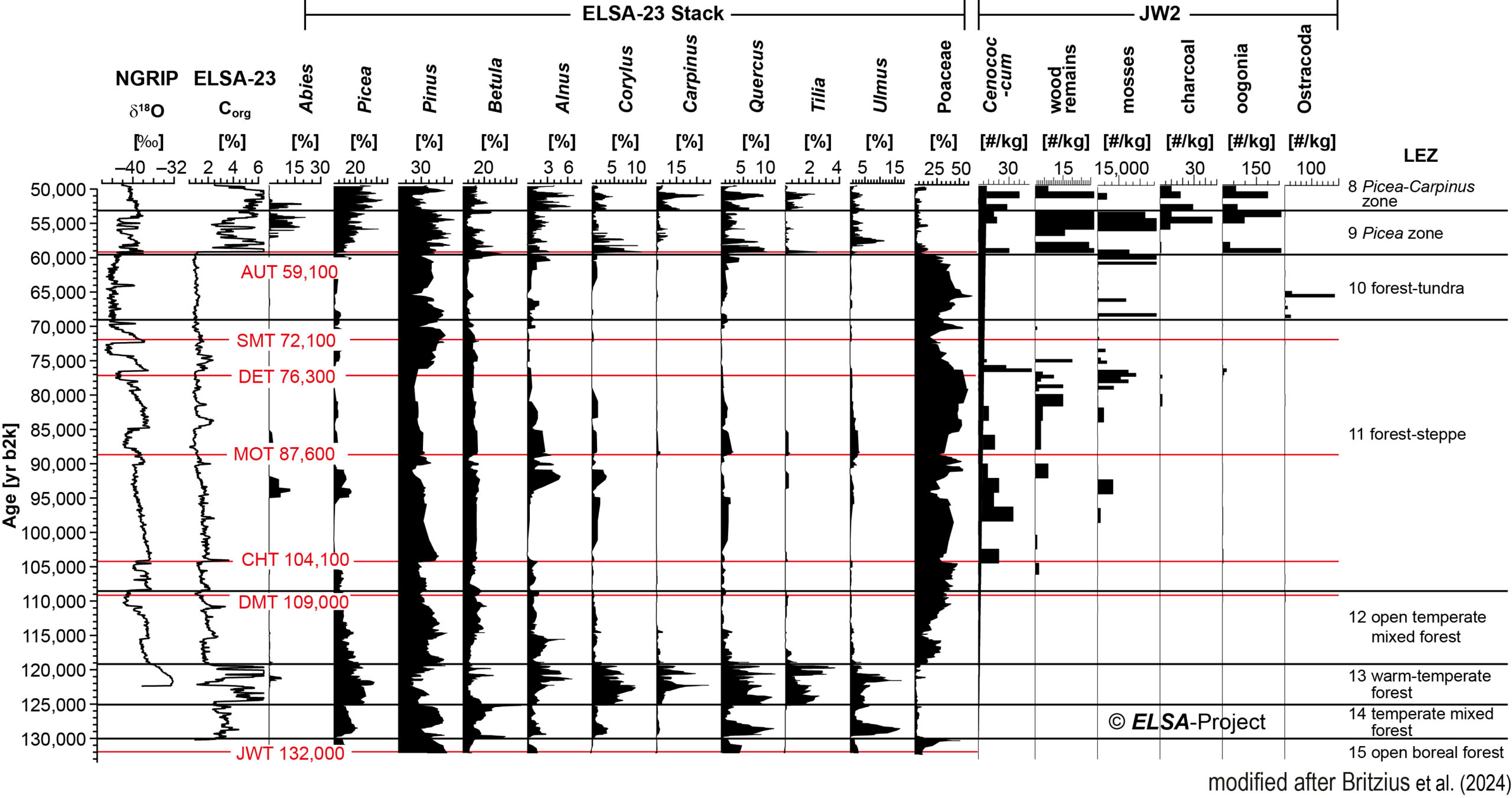Landscape Evolution Zones
- Figure Landscape Evolution Zones
- Graphic Vegetation Stack Synthesis
- Graphic ELSA-23-Stack LEZ

All proxy information described above is finally used to detect zones of stable climate conditions, and their flora/fauna. Sirocko et al. (2016) presented a first step towards the definition of Landscape Evolution Zones (LEZ) for the last 60,000 years. We took this approach, because pollen are absent from the glacial and many stadial sections and, thus, an extension of the established Holocene pollen zones was impossible. In addition, other climate parameters than vegetation are important aspects of the environment in a volcanic region, and dust, fire, and flood are much more indicative parameters to reconstruct past humidity and aridity (Fuhrmann et al. 2021). Accordingly, the LEZ approach integrates all information available from the ELSA-20-Stack.
The LEZ approach was recently expanded back to the last interglacial by Britzius et al. (2024)



ELSA-20-Stack
LEZ-related Papers
Sirocko, F.; Knapp, H.; Dreher, F.; Förster, M.W.; Albert, J.J; Brunck, H.; Veres, D.; Dietrich, S.; Zech, M.; Hambach, U.; Röhner, M.; Rudert, S.; Schwiebus, K.; Adams, C.; Sigl, P. (2016). The ELSA-Vegetation-Stack: Reconstruction of Landscape Evolution Zones (LEZ) from laminated Eifel maar sediments of the last 60,000 years. Global and Planetary Change 148:108-135, Elsevier & Science direct. doi: 10.1016/j.gloplacha.2016.03.005
Britzius, S., Dreher, F., Maisel, P., Sirocko, F. (2024). Vegetation Patterns during the Last 132,000 Years: A Synthesis from Twelve Eifel Maar Sediment Cores (Germany): The ELSA-23-Pollen-Stack. Quaternary 7, 8. doi: 10.3390/quat7010008

